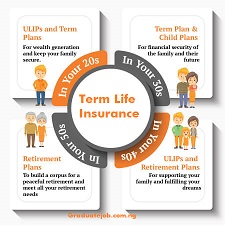Choosing a credit card can be confusing with so many options out there. Let’s make it simpler! In this guide, we will explore 10 types of credit cards and how to use them.
We’ll explain each type in easy terms so that you can easily pick the one that fits your needs. Understanding these various cards will help you make smart choices and use your credit card wisely to get the maximum benefit from it,
Whether you’re after rewards, cash back, or other types, we’ve got you covered with tips on how to choose and use your credit card effectively. Let’s dig in!
READ MORE:What Is A Secured Credit Card And How Does It Work?
What are credit cards?
Credit cards are financial tools that let you borrow money for purchases up to a predetermined limit. They provide convenience by allowing you to purchase items or services, meet obligations immediately, and pay to your credit card provider later.
You have the choice of paying the full sum or a minimal amount each month. Credit cards can include additional perks such as points or cashback.
While useful, it is critical to use responsibly to minimize debt buildup and preserve a positive credit history, which influences future financial chances.
10 types of credit cards and how to use them
1. Rewards credit cards
Rewards credit cards reward spending with points, miles, or cash back. People who pay their monthly amounts in full and on time don’t have to pay credit card interest with rewards credit cards. Many reward cards are only available to people who have good or excellent credit.
How to Use: Increase your perks by aligning your card to your purchasing habits. Choose a rewards program that fits your needs, whether it’s for travel, cash back, or other benefits.
2. Cash-back credit cards
Some people choose cash-back cards because they provide simple value. Cash-back credit cards reimburse you a percentage of the amount you spend on the card.
Some cash-back credit cards provide a set rate of cash back on all purchases, such as 2% back on every dollar spent. They may also offer bonus categories, such as 3% back on dining and 1% back on everything else.
How to Use: Ideal for individuals who like simple benefits. Pay attention to bonus categories for larger cashback rates, and check for deals on a regular basis.
3. Travel credit cards
Travel credit cards provide rewards that you may use to pay for travel expenses such as airline tickets and hotel rooms. Other travel-related advantages, such as travel insurance or priority service, may be available with these cards.
Travel credit cards can vary greatly. Some earn points or miles that can be transferred to numerous airline or hotel programs, while others give points or miles that can only be used for one co-branded airline or hotel firm.
A few travel credit cards even give benefits for other types of purchases, such as gas or meals. Some travel credit cards also include sign-up incentives, and many, but not all, levy an annual fee.
How to Use: Use the card for qualified purchases such as flights, hotels, and restaurants to earn travel points. Be mindful of any additional fees and blackout dates.
4. Premium rewards cards
Many of the most valuable rewards credit cards that you read about in the news or on the internet are premium travel rewards credit cards. Premium rewards cards frequently provide big signup bonuses and additional incentives.
Many of these cards earn travel rewards and provide travel-related incentives, therefore they are most commonly used for travel.
Because of their unique and sophisticated looks, metal credit cards and black credit cards are frequently linked with luxury and exclusivity, making them ideal options for consumers seeking a premium credit card experience.
How to Use: Ideal for frequent travelers or those looking for luxurious amenities. To ensure that it fits your lifestyle, weigh the worth of the bonuses against the annual charge.
READ MORE: How Do Credit Cards Work
5. Business credit cards
Business owners (small & large) can use business credit cards to separate their purchases from their company’s costs while also obtaining incentives, rewards, or other special features.
Small company credit cards, like personal credit cards, come in a variety of designs and features. There are no-fee business cards, cash-back business cards, and business credit cards with 0% APR.
How to Use: Use the card only for business-related expenses to have perks like rewards on business purchases, and potential tax benefits.
6. Student credit cards
Student credit cards are specifically developed to meet the demands of students. Usually, students have little credit history, little to no income, and specific spending habits.
However, some student credit cards may even provide additional cashback in areas where students spend the most, such as restaurants and grocery stores.
How to Use: Intended for responsible credit building. Keep an eye out for interest rates and expenses. Use it for little purchases, make on-time payments, and develop a solid credit history.
7. Secured credit cards
Secured credit cards require the cardholder to pay a refundable security deposit, which is normally equal to the credit limit of the card.
Because you’re basically pre-funding your credit line, secured credit cards are easier to obtain than most unsecured credit cards. As a result, they are a possibility for persons with bad credit.
How to Use: Build or rebuild credit responsibly. To develop a positive credit history, make small, regular purchases and pay the bill in full each month.
8. 0% APR introductory purchase cards
Credit cards with 0% APR allow you to avoid paying interest on new purchases for a certain amount of time after you open the card.
These cards can assist you in paying off an existing balance, saving for the future, or staying ahead on future payments.
These interest-free promotional financing deals must be for a minimum of six months. However, most competitive cards provide 0% introductory APR financing for 15 months or longer.
How to Use: Ideal for large purchases or debt consolidation without accruing interest. To prevent exorbitant interest rates, pay off amounts before the introductory period expires.
READ MORE: What Is Accounting? All You Should Know
9. Co-branded credit cards
Some businesses collaborate with banks to offer these types of credit cards. These credit cards offer benefits and rewards to the company (for example, a certain airline or hotel), yet they are issued by the bank.
If you are a frequent flyer or hotel guest, it may make sense to obtain a co-branded credit card.
10. Store credit cards
Some retailers offer store credit cards. Frequent shoppers at specific shops may desire to optimize spending by getting a store credit card.
Store credit card owners usually earn bonus points on purchases made at that store and may provide discounts or other unique benefits.
Note that some store credit cards can only be used for in-store transactions, whilst others are part of a wider payment network, such as Visa or Mastercard, and can be used elsewhere.
How to Use: Consider how often you shop at the co-branded retailer. Use for in-store purchases to receive discounts and rewards. Be wary of high-interest rates.






